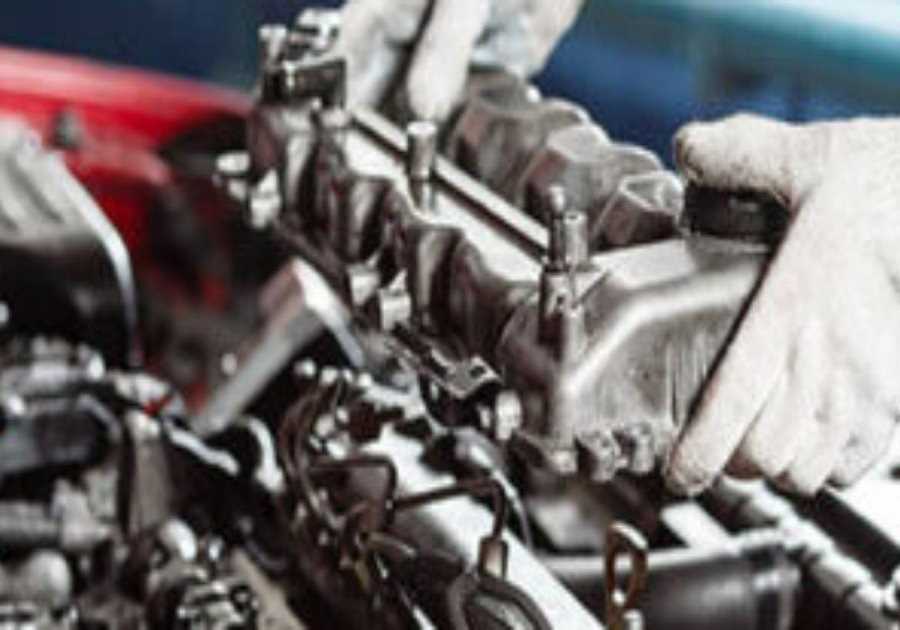
This is a guestpost from our friends at Red Stag Fulfillment.
Running a business yourself is like running a marathon at a sprinter’s pace. When starting a business, doing everything yourself saves money, so you end up becoming an expert in social media marketing, web design, and of course order fulfillment.
But there comes a day when you look up from your laptop and realize your garage is packed to the brim with inventory and there is just no more space left — physically and mentally. At that point, it’s probably time to outsource.
When your business gets big enough that doing your own order fulfillment takes up too many resources, you feel like you’re overpaying for shipping, or you want to access faster shipping options, working with a fulfillment center can be a good next step. There are a few different types of fulfillment centers, and each one usually has its own specialties. Once you start researching your options it can be a little overwhelming.
This article will cover what a fulfillment center is, how working with one can help you, and all the different types of fulfillment centers there are so you can make the best choice for your business. Let’s dive in.
What is a fulfillment center?
A fulfillment center is a warehouse that stores and ships orders to customers, so that eCommerce business owners don’t need to store and ship the products themselves. They provide physical space for inventory to be stored, and when orders come in for one of their clients, they pick, pack, and ship the order out.
Fulfillment center vs. warehouse: how are they different?
Fulfillment centers and warehouses both store inventory, but with different end goals in mind. A fulfillment center’s primary purpose is to move the inventory on to the customer, and the employees at a fulfillment center receive truckloads of inventory, process and store it, and then pick, pack, and ship orders from their clients to their client’s customers. The longer inventory sits on the shelf at a fulfillment center the more money it wastes, so a fulfillment center’s goal is to move the inventory in and out as efficiently as possible.
A warehouse, on the other hand, primarily serves to store inventory, without a customer necessarily being the next recipient of that inventory. Whether it’s short or long-term, they do not pack and ship orders to the customer. The warehouse provides space for inventory until it gets moved again.
Confusion between the two terms comes from them sometimes being used interchangeably. You may also hear about fulfillment warehouses, which are the same thing as fulfillment centers – the “fulfillment” part of the name is critical. A fulfillment center or fulfillment warehouse is a center or warehouse that also fulfills orders, while a warehouse stores inventory without necessarily being used for fulfillment.
Fulfillment center vs. distribution center: how are they different?
A fulfillment center and a distribution center also share a similarity: they both prioritize moving inventory in and out as quickly and smoothly as possible. However, the distinction between the two comes in the form of who they are sending inventory out to.
While fulfillment centers send orders to customers, distribution centers send orders to retailers, wholesalers, or other businesses. Distribution centers are primarily for re-sorting inventory and sending it onwards. Usually, they already have the order waiting when the inventory arrives. The term cross-docking can apply in this context, as it illustrates the act of moving inventory from one truck to another without the intermediate step of being stored inside the building. Because of this, storing inventory is hardly a part of their job description, as it heads back out the door as soon as possible. Fulfillment centers store inventory until orders come in from their clients.
To summarise,
- Warehouses are large buildings that specialize in inventory storage and handling. They can be used as either fulfillment or distribution centers.
- Fulfillment Centers are warehouses that receive, unpack, store, pack, and ship inventory from businesses straight to consumers. Eg, a fulfillment center receives and stores furniture on behalf of their client, an online office furniture seller. When someone buys an office chair from them, the fulfillment center ships the chair to the customer.
- Distribution Centers are warehouses that receive and send inventory in bulk, usually from one business straight to another, or sometimes within the same business. Eg, a grocery store chain will have distribution centers that receive produce from farms and then ship that produce onwards to different physical locations.
The benefits of a fulfillment center
A fulfillment center can be a boon to growing eCommerce businesses, as they will take order fulfillment to the next level. While it does cost money to outsource fulfillment, the ROI can be more than worth it in the long run. Let’s look at some of the benefits of working with a fulfillment center:
Save money for ecommerce businesses
Yes, it costs money to work with a fulfillment center. But it also saves eCommerce businesses money. It can direct your efforts towards higher-level tasks in your business such as scaling; it can also save you money in other areas. Let’s look at how working with a fulfillment center can save you money.
- Cheaper shipping. Fulfillment centers work with lots of clients, and therefore have access to bulk postage prices. If you have a high enough volume that you’re considering outsourcing to a fulfillment center, it’s almost guaranteed that your shipping cost plus your labor cost will be higher than their shipping and labor cost.
- Faster shipping. If you’re shipping your packages fast, it likely costs you a pretty penny – or you avoid it because it costs so much. A fulfillment center can likely get you a much better rate on faster shipping, which will win you a lot more repeat customers – and a better customer experience is one of the best customer retention strategies there is.
- Strategically located warehouses. Fulfillment centers are all about maximizing efficiency, and part of that is having strategically placed warehouses that can service huge swaths of the United States in the fastest time possible. Instead of being located wherever you’re located, which might not be the most ideal spot, you can choose a fulfillment center that has warehouses in the best possible locations for your customers. That means faster and cheaper shipping all around.
- Faster processing. Instead of packing and shipping your orders piecemeal, when you can, outsourcing means that there are workers whose only job is to pick, pack, and ship your order as fast as possible. They’ll be able to do it faster than you and lowering your processing time will also win you more repeat customers.
- No training is necessary. If you’ve hired staff to pack and ship orders for you, you know the training involved. By outsourcing this labor you can train your staff to do higher value-add tasks and leave the grunt work to professionals who have already been trained by someone else.
- Lower packaging costs. If you’re spending your own money on boxes, tape, labels, and other packaging supplies, a lot of that will likely be included in your contract with a fulfillment center, or it will cost you a lot less because of their ability to take advantage of bulk pricing.
- Eliminate inventory handling. The process of storing inventory and picking and packing it to be shipped to customers is incredibly time-consuming, not to mention a source of wear and tear on your body. Outsourcing this task to a fulfillment center means liberating yourself from the intensive act of inventory management, and more time for focusing on other parts of your business (plus giving your body a break).
When you look at the cost savings that a fulfillment center can provide, it’s easy to see how you can get faster, better, more accurate, and stress-free order fulfillment for the same cost or less than you’re paying now.
No need to own a warehouse
Another route that small business owners tend to consider is renting out their own space to store, and even ship, their inventory from. However, renting space is costly and it means hiring more staff and spending more of your time on order fulfillment.
Whether you’d use the warehouse just to store excess inventory until you need it, or to use it as your own personal fulfillment warehouse, a fulfillment center will have much lower overhead costs than you will. Fulfillment centers can rent (or buy) a much bigger space and spread the cost out amongst lots of clients. You’ll have to take on all the costs yourself.
Facilitate a focus on the bigger picture
You and your staff’s time is valuable, and the best place you can spend their time is on high-value-add activities that will help you scale as you focus on the bigger picture and longer-term growth.
If your time is taken up doing menial work like packing up orders and putting labels on boxes, that’s less time you spend on revenue-generating activities for your business, which only hurts you in the long run.
Automate the fulfillment process
While you probably have your method to the madness, your order fulfillment process is likely not as efficient or fast as it could be. The more things you can automate in your small business, the better.
One of the great benefits of working with a fulfillment center is that almost everything is automated – orders are automatically processed, pick and pack routes are automatically generated, and inventory is automatically updated.
All of the automation services that fulfillment centers invest in to save time and money that become invaluable to you.
Different types of fulfillment centers
You’ll likely see these terms get used interchangeably, but there are small differences between them:
Warehouse fulfillment center.
This is a fulfillment center that is specifically run out of a warehouse, as opposed to your home office, garage, the backroom of a brick-and-mortar store, etc.
This is a fulfillment center that has the order fulfillment handled by a third party, as opposed to you.
Order fulfillment center.
This is just a place where order fulfillment happens, and can be anywhere, any size, run by anyone.
In Conclusion: Should you use a fulfillment center?
Deciding whether to outsource to a fulfillment center is a big decision, but it’s also a good problem to have. It means that your business is growing so fast that you can’t keep up, and you need outside help. Working with a fulfillment center can bring you peace of mind, give you a lot of your time back, and take your business to the next level if you’re ready for it.
Jake Rheude is the Director of Marketing for Red Stag Fulfillment, an ecommerce fulfillment warehouse that was born out of ecommerce. He has years of experience in ecommerce and business development. In his free time, Jake enjoys reading about business and sharing his own experience with others.
Guestpost
--------------------------------------------
By: guestposter
Title: What You Need to Know About Fulfillment Centers When Scaling Your Ecommerce Business
Sourced From: www.referralcandy.com/blog/guestpost-fulfillment-centers-scaling-ecommerce/
Published Date: 07/22/21
.
Always check our latest articles at...
https://bestbusinessblogs.com/content-marketing






